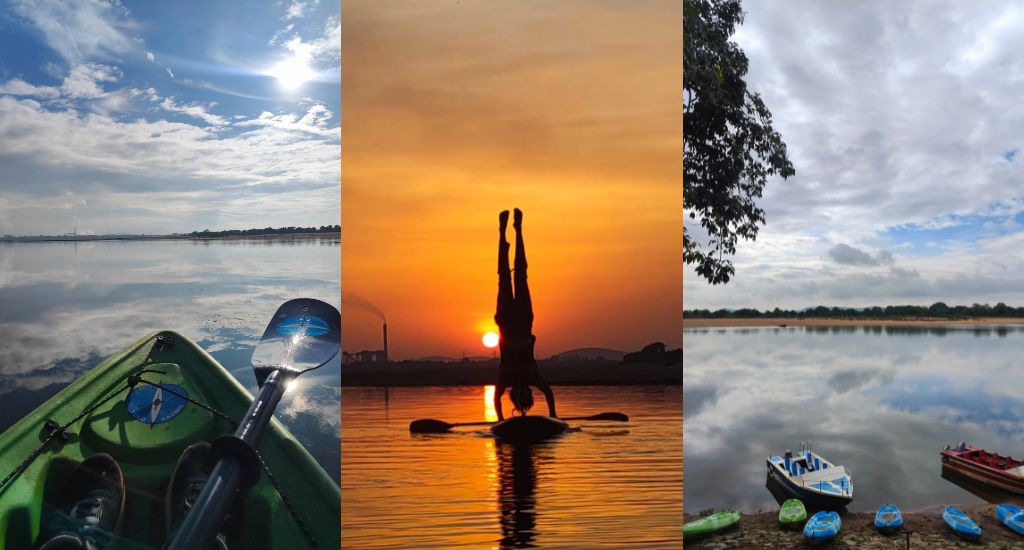
Rural youth pioneer water sports on Mahanadi
In Odisha, water sports that were once confined to the marine drive thrive in the Mahanadi River, attracting rural youth and offering them a new livelihood.

In Odisha, water sports that were once confined to the marine drive thrive in the Mahanadi River, attracting rural youth and offering them a new livelihood.
The Mahanadi, a lifeline for many communities in India and the largest river in Odisha, has recently become a hub for a new and exciting trend – emerging water sports. What once served as a source of livelihood for the local fishing community is now transforming into a playground for adventure enthusiasts and nature lovers alike.
Amidst this transformation, it is the enterprising rural youth who have taken the lead in embracing water sports and turning it into a thriving industry.
Despite a large network of rivers, water sports in Odisha have only been confined to the sea along the Puri-Konark marine drive. But in recent years, water sports such as kayaking, canoeing, paddleboarding and stand-up paddling have gained momentum on the Mahanadi River.
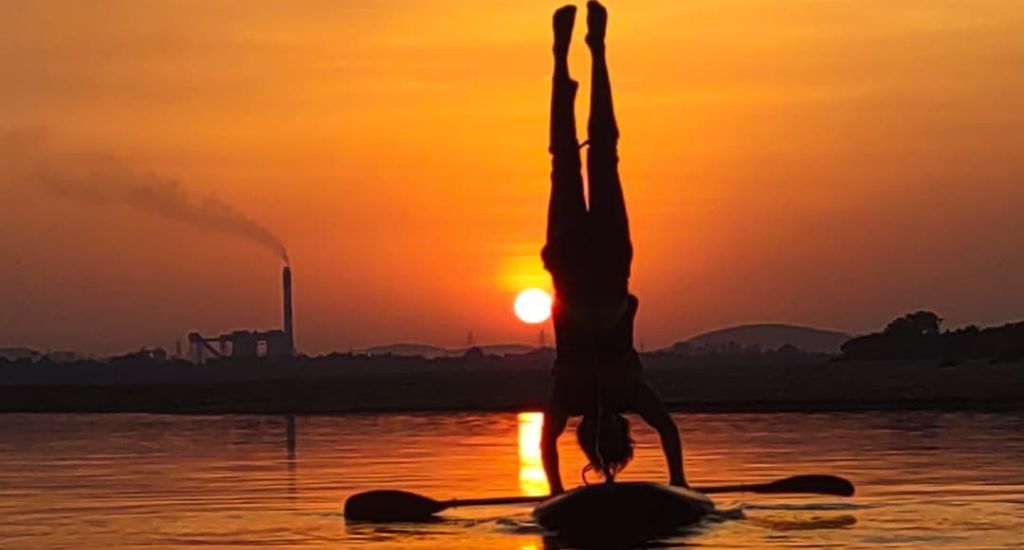
The abundance of scenic spots along its course offers a perfect setting for these activities, attracting not only the local people but also tourists from far and wide. With a new initiative, the river which has long captivated the imagination of those living in the region, now beckons a new breed of adventurers.
The journey started with Satyaki Bose, a native of Cuttack. Though born into a family of football players, his heart had a different calling – water sports. He started his enterprise Camps n Kayaks along the Mahanadi River bank close to Naraj in Cuttack, by first exploring the Mahanadi waters himself.
“Odisha has all kinds of water bodies and a huge scope for water adventures. The idea was to harness this potential while also keeping the ecological sanctity in mind,” said Bose.
Also Read: Water sports offer Kashmiri girls new career choices
The initiative was started in 2018 and received support from the Department of Tourism of Odisha in 2019. But with the enforcement of COVID-induced lockdown the following year, the initiative took a backseat. It has finally picked up pace in the last year and a half.
One of the most remarkable aspects of this burgeoning water sports scene is the active participation of rural youth. With an innate understanding of the river and a deep connection to their roots, they are uniquely positioned to promote and sustain these activities.
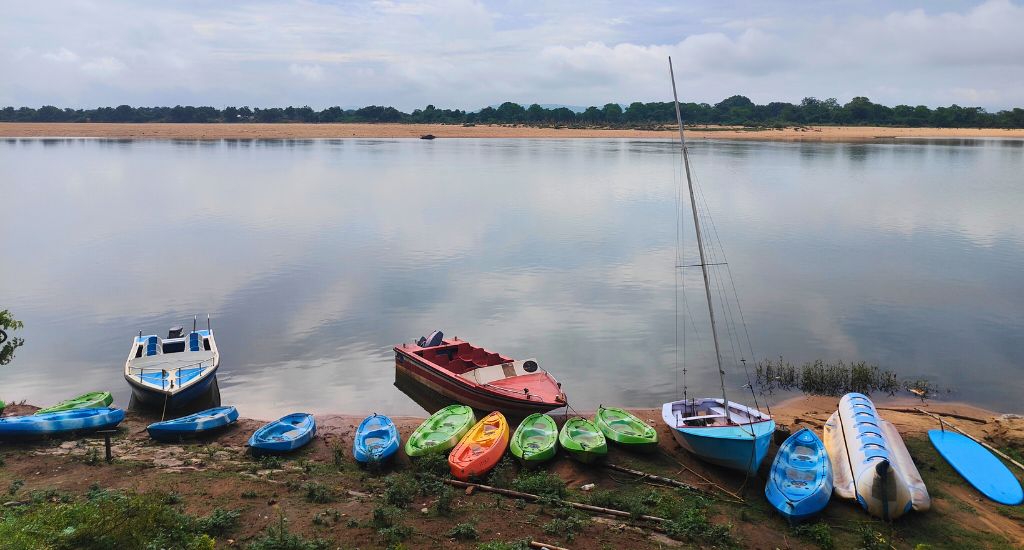
Bose slowly roped in young water enthusiasts from the nearest village Brajbiharipur. The village which was once known for its plumbers and carpenters is now gaining popularity as a village of water sports enthusiasts.
“I always wanted to involve the community in this. When I took to the water and started practicing, a few young boys came and observed. I soon started identifying good swimmers as that was the only prerequisite,” said Bose. “Based on their interests, we started training them. The youngest member of our team is a class VIII student.”
The water adventures also offer a scope for camping on a small island in the Mahanadi River basin. The camps are managed by a few elderly men from the village.
“The camps are set up during the winter months. It is a community-managed initiative and we plan on scaling it further,” said Bose.
Bose has been trying to introduce young men to various water sports and even train them for the same.
Also Read: “You’re a girl. How can you go out in a sports outfit?”
“Every morning I started spending some time learning about kayaking and other sports and developed a lot of interest,” said a member of the team Aditya Narayan Das (20).
The youth were trained in swimming, life-saving techniques, and water sports skills at the National Institute of Water Sports, enabling them to become certified instructors and guides.
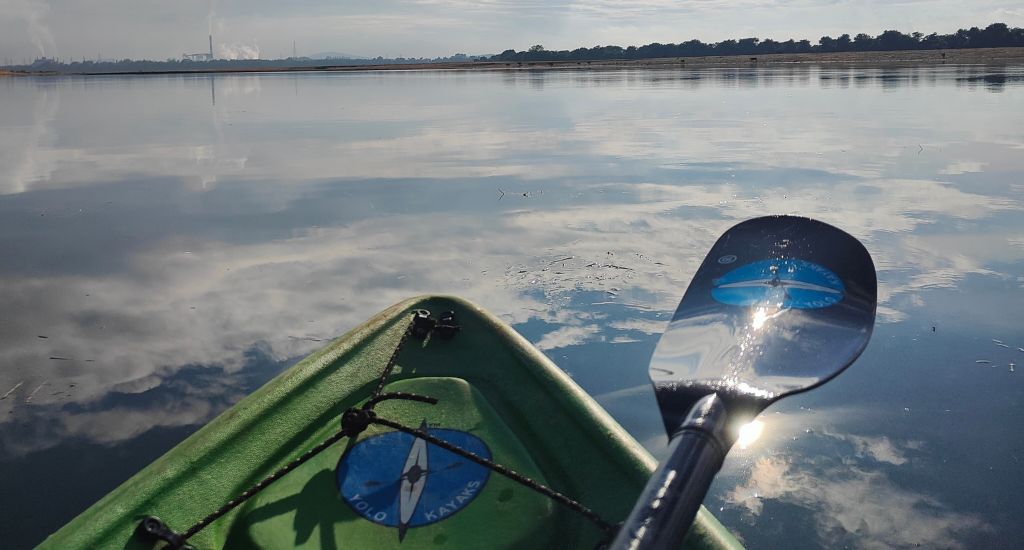
“We undertook a week-long training in safety and in boat operations,” said Das. “Now I can very easily do longer expeditions.”
For most natives of Brajbiharipur village, plumbing and carpentry are the major sources of income. It was the same for 23-year-old Santosh Rout who started working as a plumber in Cuttack right after completing his school education.
“I always knew how to swim but I didn’t know we could do so many wonders with the water here,” said Rout. “This definitely feels more fun and relaxing than plumbing.”
For many rural youth, embracing water sports has opened doors to economic empowerment. They have found sustainable livelihoods and a way to uplift their communities economically.
The team facilitates kayaking at a stretch of 2 to 11 km in the river, and a longer kayaking expedition of 40 km spanning over a day. The kayaking trails have also expanded to Chilika Lake, the largest brackish water lagoon in Asia.
Also Read: Traditional snake boat race in Kerala waters
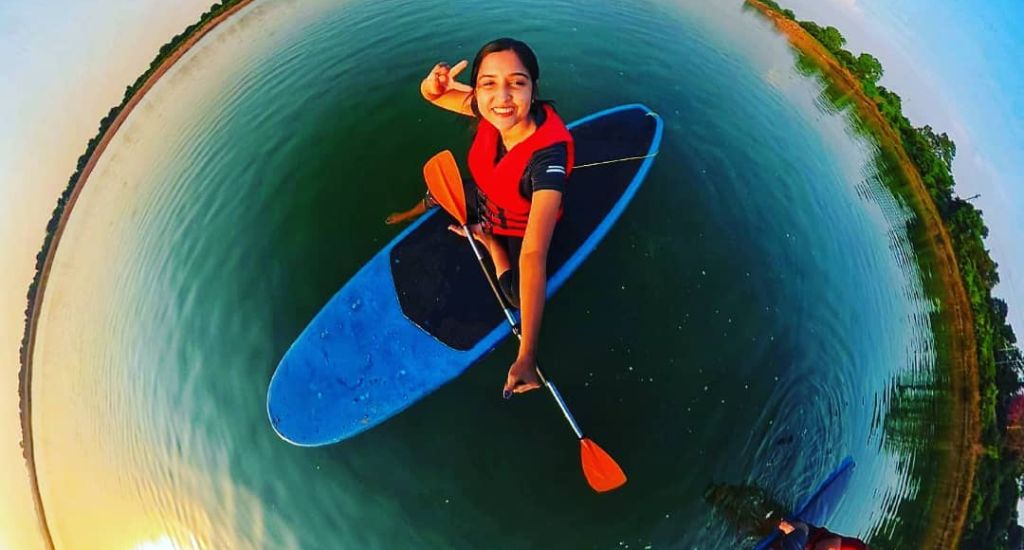
Interestingly, as the popularity of water sports grows, so does the awareness of the need to preserve the river’s ecology. The rural youth, being intimately connected to the river and its surroundings, have taken up the responsibility of environmental stewardship.
They organise cleanup drives and spread awareness about conservation among visitors, ensuring that these activities remain ecologically sustainable.
“Clean-up drives have become an integral part of the entire process. We also believe that it should first begin at home. When we started, we sensitised people from the village to not defecate along the river bank. It’s important that everybody owns the space and then the process,” Das said.
The youth also conduct clean-up drives across all their kayak trails and sensitise the adventure seekers regarding the same.
The lead image at the top shows Mahanadi river has become the new spot for water sports enthusiasts (Photo by Aishwarya Mohanty)
Aishwarya Mohanty is an independent journalist based in Odisha. She reports on the intersection of gender, social justice, rural issues and the environment. She is also a Rural Media Fellow powered by Youth Hub.